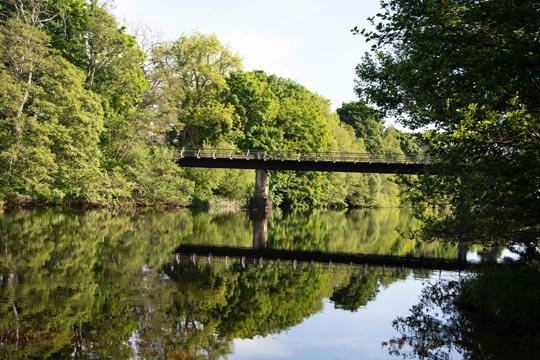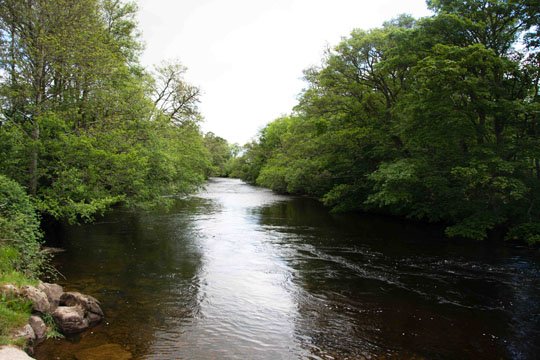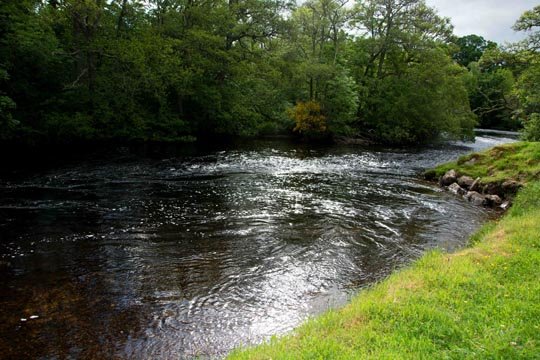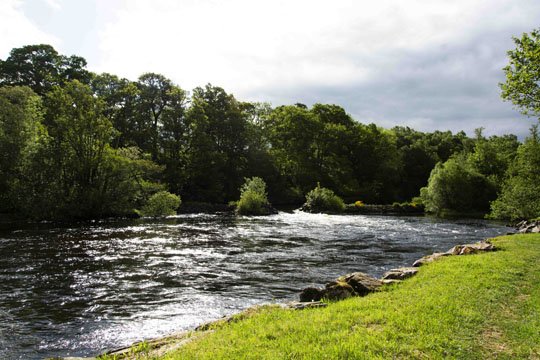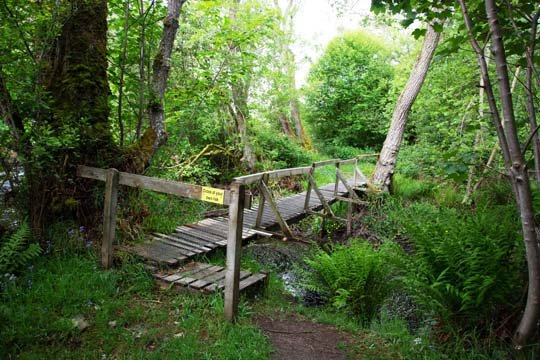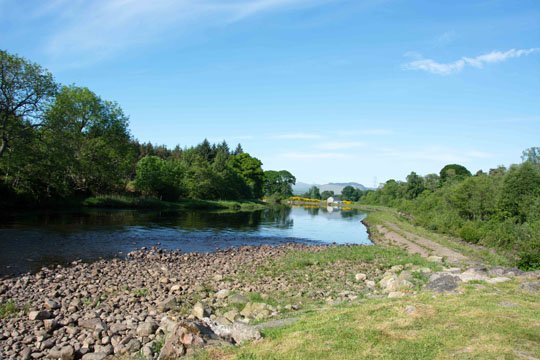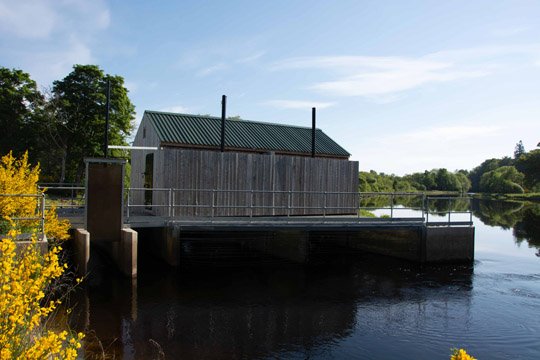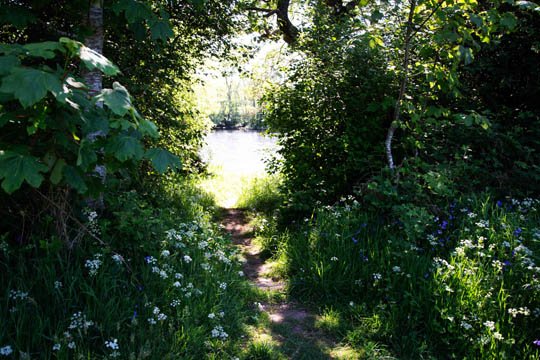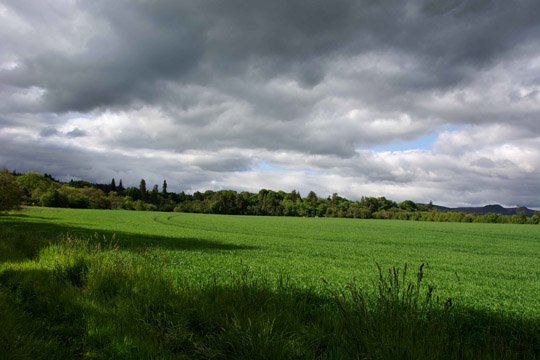A Not so Secret Island
This is a slightly different blog to the ones I normally write. This time I will not be telling you the location of this walk. You will see the reason in endnote i.
This blog is the result of a couple of visits to an island – which explains the very different weather conditions. The first day was really hot and had a forecast of sunshine all day. The second day was forecast for rain and strong gusty winds, and much cooler. I think it was over 10°C of difference between the two consecutive days.
This walk started from our village, along a local single track road (see endnote ii) that passes by some stables. This is now a very pleasant road to walk along as the lockdown has meant an overall reduction in traffic. Each day we only encountered a couple of vehicles.
Approaching the island
Not far from the stables we turned down to the island on a dirt-track type road. This is quite a steep road (well, that’s what my knees told me, although my fitness tracker may tell a different story). We then crossed a very old wooden bridge which afforded us views over the river. The trees on either side were in full leaf and looked stunning against the blue of the water and sky.
The island is about 99 acres in size and is mainly arable farmland although it has a path round the island. There also used to be an iron age fort on the island.
The Island route
We turned left after we crossed the bridge. This took us onto a well trodden path at the edge of one of the fields. As the walk was in early June there were lots of spring flowers in bloom – a real bonus for many types of insects and wildlife. I do wish that more farms adopted this policy it would really benefit the wildlife.
Then, without warning we had a serious predicament! The path cut across the field. Now, I hate walking across fields especially when there is a crop in the field. However, this was a very well trodden path, and from doing a bit of research it appears as if the path has been here for many years. The path took us into another field and was now flanked by the field on the right and a small burn on the left.
Down by the river
Although the path took us along the field margin, there were several sections that diverted us down to the river edge where we could follow part of a riverside path. Periodically we came across lots of small benches which I suspect are riverside beats for fishermen. However, there was one very nice bench which was dedicated to Dr Robin John Hope.
Cross at your own risk
A short distance further on there was a small hut which I suspect was a fishermans hut. Around this area was a hive of activity. Not fishermen, but dozens of sand-martins and swifts flying around the hut.
If we had taken the path that followed the field margin we would have missed most of this. But ever worse, we would have missed the little bridge. Now, there is a warning that we were crossing at our own risk – so we did cross one at a time. However, the bridge did seem quite safe – although there was only a barrier at one side meaning there was nothing to stop you falling at the other. Now, that would have been a lovely dip on a hot summers day.
The Hydro Scheme
A short way on we then came across a much larger fishermans hut. We left the fisherman’s hut and branched out onto the path on top of a constructed embankment. This path was quite uneven as it was made up of hard core and covered by weather resistant fencing type material. This led out to a small building. As you will see from the photo it looked absolutely idyllic with a blue sky highlighting the distant hills, river, old trees and a very calm almost mirror like river.
As we reached the building we heard a very quiet rhythmic wooshing noise. Then the penny dropped – this was the hydro generating system that the local estate installed and then commissioned at the end of October 2015. Sure enough, as we drew nearer we saw two Archimedean Screw turbines. The wooshing was the water passing over their corkscrew style mechanisms. This was installed to provide energy to the local estate with excess capacity being fed back into the national grid.
The Return Route
We spent quite a bit of time here having a good look around the building to get some idea how it worked. The water very peacefully flowed under the front of the building and next to the turbines there were a couple of fishladder channels. This is really important as this river contains both trout and salmon.
After crossing the bridge, rather than taking the same route back to the village we walked through a path that crosses the bottom of the field margin. Again, this is a really broad field margin, full of grasses, wildflowers and trees. Occasionally we caught glimpses of the river through gaps in the vegetation. Finally we arrived back at the village, and the end of our walks.
Addendum:
Sadly, not long after I wrote this blog the owners had to shut the bridge onto the island due to people driving to the location and fly tipping large amounts of waste. I’m really pleased I didn’t disclose the location.
Endnotes:
i I live in Scotland and we are currently under what is commonly called ‘lockdown’ due to covid-19. However, a few days ago these measures were eased slightly and people can now travel/drive approximately 5 miles to take exercise. This however, has resulted in many people totally ignoring this instruction and travelling many miles to beauty spots. So, to avoid encouraging anyone to make a long journey to visit this island, I won’t be naming any of the locations.
ii I have seen many (very heated) discussions about different road types which have arisen due to a misunderstanding of the road discussed. A single track road is a road with one vehicle-width carriageway. This road is used by traffic going in both directions. Therefore, if one vehicle meets another vehicle one will have to go into the nearest passing place to let the other one pass. Vehicles are also meant to pull into passing places to let faster vehicles going in the same direction pass.
This blog was originally published on:
and subsequently modified on:




